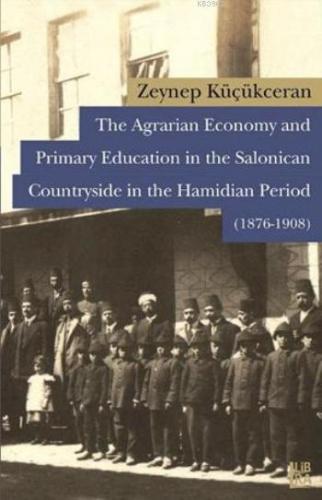The Agrarian Economy and Primary Education in the Salonican Countryside in the Hamidian Period; 1876-1908
Boyut:
135-195-0
Sayfa Sayısı:
170
Basım Yeri:
İstanbul
Baskı:
1
Basım Tarihi:
2014-04-01
Kapak Türü:
Karton
Kağıt Türü:
2.Hamur
Dili:
İngilizce
Kategori:
%8
indirimli
1.200,00TL
1.104,00TL
Havale/EFT ile:
993,60TL
9786054326938
409643

https://www.sehadetkitap.com/urun/the-agrarian-economy-and-primary-education-in-the-salonican-countryside-in-the-hamidian-period-1876-1908
The Agrarian Economy and Primary Education in the Salonican Countryside in the Hamidian Period; 1876-1908
1104.00
As a result of the modernization process transforming much of the world in the nineteenth century, the changing structure and
function of the state necessitated the development of a relationship between states and their subjects. In the context of this relationship,
states used various instruments to monitor, control, and shape their subjects in order to ensure the survival of the state machinery.
Education acquired a pivotal importance in shaping subjects according to state policies. In the Ottoman Empire its importance also began
to be perceived in the first half of the century, but it was Hamidian era that such a policy manifested itself most clearly. Yet, for the
people living in the villages, it was the agrarian economy that would continue to determine and shape their lives. Thus villages became a
field of struggle between the state, which was attempting to penetrate rural life (and, by extension, the lives of the peasants) through
education, and the realities of an agrarian existence and the economic and social relationships that it creates. For that reason, a history of
education without a comprehensive analysis of the village conditions would be incomplete. This book aims to fill this blank in the history
of education by focusing on the socio-economic structure in the villages that derives from agrarian economy. In doing so it also offers
new sights to the field of social history through a close examination of the lives of peasants and the complex relationships between them.
As a result of the modernization process transforming much of the world in the nineteenth century, the changing structure and
function of the state necessitated the development of a relationship between states and their subjects. In the context of this relationship,
states used various instruments to monitor, control, and shape their subjects in order to ensure the survival of the state machinery.
Education acquired a pivotal importance in shaping subjects according to state policies. In the Ottoman Empire its importance also began
to be perceived in the first half of the century, but it was Hamidian era that such a policy manifested itself most clearly. Yet, for the
people living in the villages, it was the agrarian economy that would continue to determine and shape their lives. Thus villages became a
field of struggle between the state, which was attempting to penetrate rural life (and, by extension, the lives of the peasants) through
education, and the realities of an agrarian existence and the economic and social relationships that it creates. For that reason, a history of
education without a comprehensive analysis of the village conditions would be incomplete. This book aims to fill this blank in the history
of education by focusing on the socio-economic structure in the villages that derives from agrarian economy. In doing so it also offers
new sights to the field of social history through a close examination of the lives of peasants and the complex relationships between them.
Yorum yaz
Bu kitabı henüz kimse eleştirmemiş.










